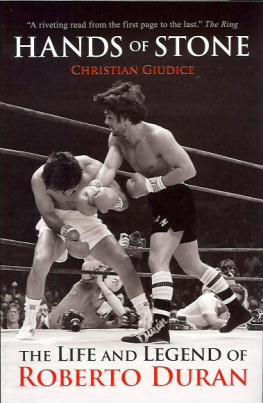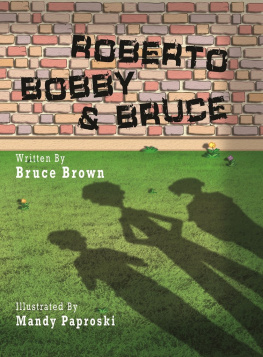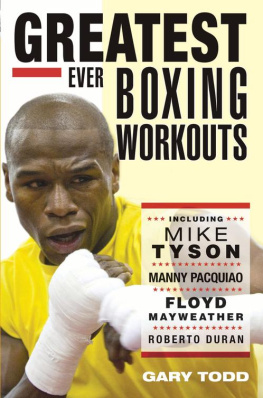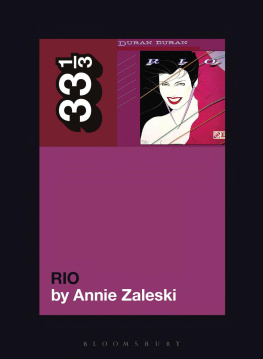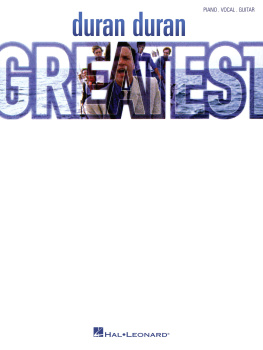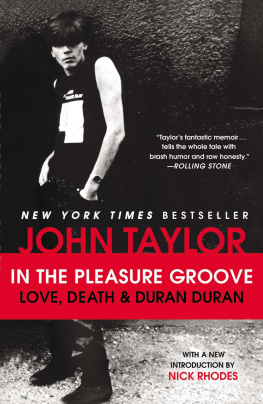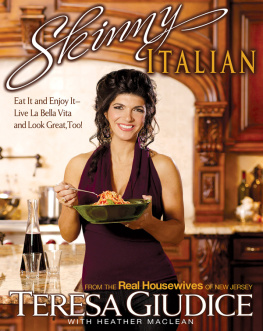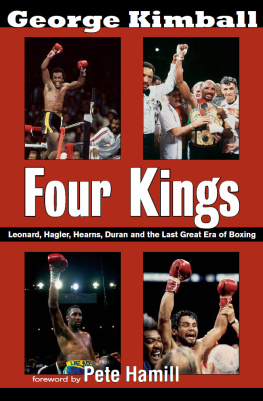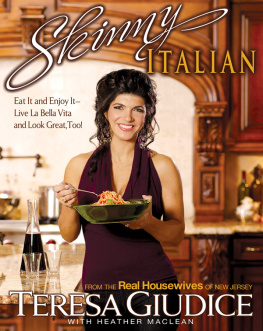Christian Giudice - Hands of Stone: The Life and Legend of Roberto Duran
Here you can read online Christian Giudice - Hands of Stone: The Life and Legend of Roberto Duran full text of the book (entire story) in english for free. Download pdf and epub, get meaning, cover and reviews about this ebook. year: 2011, publisher: Milo Books, genre: Non-fiction. Description of the work, (preface) as well as reviews are available. Best literature library LitArk.com created for fans of good reading and offers a wide selection of genres:
Romance novel
Science fiction
Adventure
Detective
Science
History
Home and family
Prose
Art
Politics
Computer
Non-fiction
Religion
Business
Children
Humor
Choose a favorite category and find really read worthwhile books. Enjoy immersion in the world of imagination, feel the emotions of the characters or learn something new for yourself, make an fascinating discovery.
- Book:Hands of Stone: The Life and Legend of Roberto Duran
- Author:
- Publisher:Milo Books
- Genre:
- Year:2011
- Rating:3 / 5
- Favourites:Add to favourites
- Your mark:
- 60
- 1
- 2
- 3
- 4
- 5
Hands of Stone: The Life and Legend of Roberto Duran: summary, description and annotation
We offer to read an annotation, description, summary or preface (depends on what the author of the book "Hands of Stone: The Life and Legend of Roberto Duran" wrote himself). If you haven't found the necessary information about the book — write in the comments, we will try to find it.
Hands of Stone: The Life and Legend of Roberto Duran — read online for free the complete book (whole text) full work
Below is the text of the book, divided by pages. System saving the place of the last page read, allows you to conveniently read the book "Hands of Stone: The Life and Legend of Roberto Duran" online for free, without having to search again every time where you left off. Put a bookmark, and you can go to the page where you finished reading at any time.
Font size:
Interval:
Bookmark:
HANDS OF STONE
The Life and Legend of Roberto Duran
Christian Giudice
MILO BOOKS LTD
Worldwide Praise for HANDS OF STONE
In the age of the tabloid we know more about many of our sporting heroes than we ever cared to know, but from the time he blasted his way into our consciousness with a punch to the scrotum almost four decades ago, Roberto Duran had been an elusive and enigmatic figure. With Hands of Stone , Christian Giudice has separated the wheat from the chaff in the most illuminating deconstruction of a mythic ring legend since John Lardner went toe-to-toe with the ghost of Stanley Ketchel.
George Kimball, author of Four Kings
My favourite book.
Ricky Hatton, former three-time world champion
Christian Giudice has succeeded brilliantly in separating the myth from the legend and produced a book that serves only to enhance further the reputation of an already astonishing fighter... Hands of Stone is the dazzling account of a breathtaking fighter and a remarkable man.
The Independent
A cracking book.
Daily Star
The first and definitive account of Durans extraordinary life both in and out of the ring.
Boxing Digest
Durans 120-bout career is vividly chronicled.
The Independent On Sunday
Compelling.
The Sun
A must for all fight fans.
Liverpool Echo
A gripping biography. Every page will keep readers enthralled.
Dublin Evening Herald
A profoundly detailed reconstruction of Durans world.
Gerald Early, Belles Lettres, A Literary Review
What a story!
Scotland on Sunday
If you buy only one boxing book this year, Hands of Stone should be it.
Boxing Monthly
This electronic edition published in 2011
Copyright Christian Giudice
The moral right of the author has been asserted. All rights reserved. No part of this publication may be reproduced in any form or by any means without permission in writing from the publisher, nor be otherwise circulated in any form of binding or cover other than that in which it is published and without a similar condition beingimposed on the subsequent purchaser.
MILO BOOKS LTD
www.milobooks.com
I am not God but something very similar.
Roberto Duran
To my mother who faced down a deadly disease and beat it.
To my father, a fighter, a man, my hero who once threw a perfect left hook on Schellenger Ave. (between Atlantic and Pacific Aves.) on a summer night in Wildwood. Thank you for protecting us all of these years. I wrote this book for you, Pop.
Contents
Prologue
We mustnt be afraid of violence. Hatred is an element of struggle; relentless hatred of the enemy that impels us over and beyond the natural limitations of man and transforms us into effective, violent, selective and cold-blooded machines .Che Guevara
IT IS 26 NOVEMBER 1980 and Roberto Duran Samaniego stands naked in the middle of the ring. His arms sulk by his sides. He feels weak. His body has betrayed him, as he has betrayed himself. His eyes, the twin beacons of his demonic aura, search for the exit.
Always defiant, tonight he bleeds compromise. It is like watching a Ferrari sputtering to the closest gas station. With sixteen seconds remaining in the eighth round in the Louisiana Superdome, his mocking, face-pulling, showboating challenger, Sugar Ray Leonard, has affronted his dignity and stripped him of his macho . And so he breaks the contract that he signed the day he stepped in the boxing ring: To punch till the end. Duran has always boxed like he cursed, in quick, immediate thrusts; now the roughest, toughest, most feared fighter in the world raises his left hand and walks away.
No quiero pelear con el payaso, says Duran. I do not want to fight with this clown. He repeats the words, but a ringside broadcaster claims to hear him say no ms, the Spanish for no more. The phrase will live in sporting infamy.
After a second, Leonards brother Roger yells, He quit on you Ray. Leonard runs over and jumps on the ringpost. The fight is done.
People would later dub the man a coward, a fake, a phony. They said laziness and gluttony had precipitated his downfall; fame had accelerated it.
The first part of Durans career, his life, was over. Act Two was about to begin.
EVEN BEFORE I went to Panama, I knew one thing for sure about Roberto Duran: The man was not a quitter. I didnt understand the contradictions of the no ms fight but also didnt buy into the hype. When I told people that I was headed to his homeland, they joked about the infamous moment when he left the ring seven rounds early. Tell him no ms for me, they said.
With a face that reminded some of Che Guevara, others of Charles Manson, Durans feral stare never left me. His look was compelling, his image enigmatic, his fighting skills unsurpassed. In the ring, Duran came forward and intimidated; he didnt know any other way. Those who stood up to him paid the price in blood and hurt; those who ran were pursued and hunted down. Sportswriters devoured stories of his wild childhood, told of him swimming across bays with a bag of mangoes held in his mouth to feed his family. His eyes were dark coals of fire and anything that he sneered at froze in terror. But who was this man? Was he really pure evil lodged in the body of a 135-pound prince, or was it all an act?
Even when his ability to intimidate had waned, the Doo-ran, Doo-ran cheers still echoed around sold-out arenas. Even when he was only a quarter of his former self, a sad, overweight Elvis making his last call, he was still Duran. Watching those final years of futility it became clear that legends never die, they just age. So when the thought of finding and telling the Duran story crept into my head, I couldnt resist. With the purpose of finding this man, I decided to leave my job, friends and family and head to Panama City. I had a smattering of Spanish, a laptop and some old Duran fights on tape. I didnt even know if he spoke English, or how well.
I was six years old on that November night in New Orleans in 1980. I wanted to know about the young Duran, the kid whose face came to be plastered all over Panama City, and how someone who had nothing became a symbol for hope in a Third World country that suffered every day. I wanted to see how the mere glimpse of Durans smile could make a difference. Few people have the influence on a country as Duran does in Panama and the only way I would understand it was to follow him there. The only way I could comprehend the strength, the character of this man was to eat patacones and empanadas with his people, sip coconut juice straight from the fruit, dance salsa, and listen to the music of Osvaldo Ayala, Los Rabanes or Sandra y Sammy. I had to go to Guarare and the gyms in Chorrillo to let the legend seep into my blood amid the 100-degree heat. All his old managers, promoters, friends and schoolteachers would have something to say and I had to absorb it.
Finding him was another story. Somehow in Panama everyone knows Duran personally. He is everyones buen amigo . So when a taxi dropped me off at Durans home in the El Cangrejo neighborhood the night I arrived, I knew I was onto him. Duran never showed that night, but I knew deep down that I would find him and learn the secrets that many in Panama claimed already to know. Thats the reason that many people respect him because he never forget where he come from, said Chavo, his oldest son. Hes humble and always told me, Remember Im from El Chorrillo, a poor neighborhood, so you have to be humble. The people respect that. Hes always helping the poor people, especially with the kids. People like that. In a country of less than three million souls where many live on less than a dollar a day, that counts.
Font size:
Interval:
Bookmark:
Similar books «Hands of Stone: The Life and Legend of Roberto Duran»
Look at similar books to Hands of Stone: The Life and Legend of Roberto Duran. We have selected literature similar in name and meaning in the hope of providing readers with more options to find new, interesting, not yet read works.
Discussion, reviews of the book Hands of Stone: The Life and Legend of Roberto Duran and just readers' own opinions. Leave your comments, write what you think about the work, its meaning or the main characters. Specify what exactly you liked and what you didn't like, and why you think so.

